CHASM
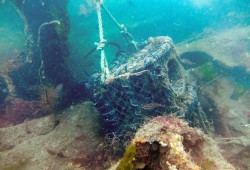
CHASM: Crustaceans, Habitat And Sediment Movement.
The CHASM project aims to identify causes behind the decline in crab and lobster catch, the decline in sea water and habitat quality, and the increased quantity of marine sediment on the UK south coast initially observed by the fishermen of Selsey Bill. These are questions that first emerged well over 10 years ago, but to which we are only starting to gain insight now. The work of CHASM includes acquiring and processing environmental samples and establishing correlation with other environmental and geospatial data from the region.
The fishing grounds near Selsey Bill, West Sussex, have traditionally been well managed and productive. Fishing in the area has been shown to date back to the Bronze Age, while individual fishing families can trace their roots back centuries. The Selsey fishery was first recorded by Bede in 730AD and, typical of most small inshore UK fisheries, is of huge cultural significance locally.
Many local fishermen are traditionally potters whose main catch is comprised of edible crab (Cancer pagurus) and European lobster (Hommarus gammarus), while other species includes fin fish, common or edible whelks (Buccinum undatum), and cuttlefish (Sepia officinalis) according to season.
The sea surrounding the Manhood Peninsula and within local harbours should be healthy. The Selsey fishery should thrive here alongside the marine plant and animal inhabitants. These are key components in the marine ecosystem and food web, and alongside tourism, contribute heavily to the blue carbon economy whose significance is increasingly being recognised. Instead, the Selsey fishery together with many UK inshore fisheries is in a state of sharp decline.
Initial investigations into the seabed and water column, the factors most likely to impact crustaceans, appear to show that reduced crab and lobster catch is an indicator of many changes currently taking place in coastal seas (crabs and lobsters are the canaries in the coal mine in this respect). Similar observations have also been made elsewhere in the world. Previous overfishing cannot be discounted but reasons such as contaminants in sediment, water quality, and changes in other environmental parameters also need to be considered.
Something has affected the marine environment, but it isn't clear what that is. Observations indicate a huge range of potential environmental stressors making the issues extremely complex. Some are likely to be seen globally, others will be local. A key feature is that environmental stressors are normally examined on an individual rather than a holistic basis. However, this approach fails to consider the combined effects, a potentially damaging omission. CHASM hopes to address this.
Key partners have undertaken preliminary work in an early attempt to identify the relevant causes. As described before, this included acquiring and processing environmental samples and correlating findings with other environmental and geospatial data from the region. Work to date is summarised in the following pages.
Key Project Aims:
- To understand the changes that have taken place on the south coast as initially identified in the Selsey crab and lobster fishing grounds, particularly within the Selsey Bill & Hounds MCZ.
- To determine whether the fishing grounds have been impacted by recent environmental inputs including sediment increase, sewage discharge and contaminants in land runoff.
- To understand whether the negative effects on the Selsey fishing industry can be mitigated to ensure the sustainability of both the industry and the nearshore marine environment.
- To gain greater support and understanding of the marine environment from local communities, visitors and authorities by improving understanding of the benefits and challenges of the open coast through partnerships and education programmes onshore and underwater.
- Develop affiliations with other local initiatives including Sussex Bay, the Solent Seascape Project, Sussex Kelp Restoration Project, CHaPRoN, Clean Harbours Partnership and the Three Harbours Partnership.
CHASM’s first year report and project document were sent to David Attenborough, who kindly found time to reply. He extended his best wishes the CHASM project and hoped the work would enable protective measures to be based not on theory but facts.
We’ll do our very best!
CHASM Project Area
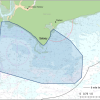
The CHASM Project Area covers the inshore fishing ground of the Manhood Peninsula. The main project area is very close to shore where reductions in crab and lobster catch, and other environmental changes in the marine environment have been noted. The wider area is where sediment sampling has taken place, and where other factors affecting catch are likely... Continue Reading »
CHASM Report 2020-2021
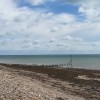
Since early 2020 the first stages of a project concentrating on lobsters and sediment has been taking place in the seas surrounding the Manhood Peninsula south of Chichester, West Sussex. This is the CHASM Project (CHASM | Manhood Peninsula Partnership). The acronym stands for Crustaceans, Habitat And Sediment Movement. The project began following Sea’s the Day (Sea’s the... Continue Reading »
CHASM Event 2022
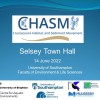
The CHASM project hosted its first stakeholder network event on 14 June 2022 at Selsey Town Hall, where speakers presented the complex backdrop of change that has coincided with reductions in the coastal crustacean fisheries around Selsey Bill, West Sussex. Funded by the Faculty of Environment & Life Sciences at University of Southampton, the aim was to bring together stakeholders... Continue Reading »
CHASM Film 2022
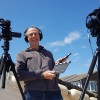
Fishing has been a part of Selsey Bill, West Sussex and the surrounding areas since the Bronze Age. Local fishermen tell of huge changes to the fishing grounds in recent years, about the small numbers of lobsters being caught locally, and large influxes of sediment arriving in their fishing grounds. Needing to understand these changes led to the development of... Continue Reading »
Letter from David Attenborough
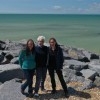
We were so pleased to receive a letter from David Attenborough about the CHASM project. CHASM’s first year report and project document were sent to David Attenborough, who kindly found time to reply. He extended his best wishes the CHASM project and hoped the work would enable protective measures to be based not on hunches, but facts We’ll do our very best!Continue Reading »
Sonde and Telemetry Units
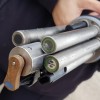
CHASM is pleased to be working with the Environment Agency National Water Quality Instrumentation Service (NWQIS). The aim is to measure water quality parameters along the coast of the Manhood Peninsula, south of Chichester West Sussex, so we can look at some of the environmental factors such as turbidity and water quality that might be affecting crabs and lobsters,... Continue Reading »
Life Solved Live
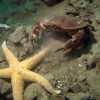
Life Solved Live is a lecture series held by the University of Portsmouth presenting discoveries intended to change the way you see and understand things. The introductory lecture by Professor Alex Ford discussed the shocking truth behind our pollutants and our marine life in his talk ‘Sex changing sea life’. This was an absolute light bulb moment for the... Continue Reading »
2022 Cefas paper Janickina feisti
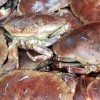
In recent years the Selsey fishermen have found in creasing numbers of sleepy and dead crabs among edible crab (Cancer pagarus) catch in the sea off Selsey prompting Cefas to investigate. A previously unidentified paramoebiasis, Janickina feisti, was discovered in the Selsey crabs. This resulted in extensive investigations by Dr. Kelly Bateman, Crustacean Health Theme Lead, Cefas. Following is a... Continue Reading »
Sediment Workshop May 2023
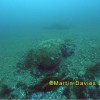
CHASM has partnered with BLUE Marine Foundation to deliver a workshop examining marine sediment influencing Selsey and the rest of the Sussex Coast. The workshop took place on 18 May 2023 and was funded by the Rewilding Network. The Sussex Sediment Monitoring and Adaptive Response Workshop brought together the key stakeholders involved in monitoring and regulating sediment inputs to... Continue Reading »